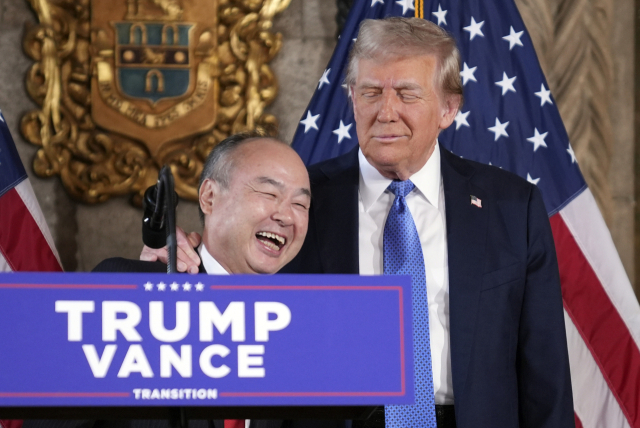[송현칼럼] 소란스러운 글로벌 시장
데이비드 전 美 아틀라스캐피털 회장
지난 2월 말 글로벌 금융시장은 수직하강을 경험했다. 주가가 하락하고 달러화는 약세를 보였고 여신금리 차는 벌어졌다. 겨우 1주일간의 증시 조정이 지난 1년간 증가분의 절반을 없앤 경우도 있었다. 원인을 놓고 어떤 이는 중국을 꼽기도 하고 또 다른 쪽에서는 글로벌 성장 둔화를 염려하기도 한다. 정확한 이유가 무엇이던간에 글로벌시장에서 만연했었던 위험 선호 현상은 분명 줄어들었다.
위험 선호 현상이 크게 증가했던 지난 4년간 우리는 주식시장과 여신금리, 통화에서 글로벌 변동성이 최고치에 이른 것을 목격했다. 이번 조정 이후의 핵심 쟁점은 우리가 지난 2주 동안 본 것이 새로운 약세장의 시작인지 정상적인 강세장의 이익 실현인지를 판단하는 것이다.
현재까지의 결론은 살지 팔지를 결정하는 것이 너무 이르다는 것이다. 글로벌 시장 및 위험 선호에 대한 중기전망은 미국의 경제 성장과 인플레이션 기대치에 대한 실행 경로와 변화에 의해 결정될 것이다. 한 가지 분명한 것은 글로벌 거시경제 위험이 중국에 있지 않다는 것이다. 거시경제 및 외환시장의 위험은 바로 미국에 있다.
지금 이 시점에서 알려진 것과 함께 알려지지 않는 요소들을 정리해보는 것도 도움이 될 것이다. 우리가 알고 있는 것은 글로벌 유동성이 지난 몇 년 동안 급증했다는 것이다. 또 미국의 여신 팽창 사이클이 하향 전환의 신호를 보내고 있고 레버리지ㆍ만기ㆍ유동성 등 금융시장에 지난 5년간에 비해 더 많은 위험이 존재한다는 것이다. 미국 주택시장이 어려움을 겪고 있으며 서브프라임 모기지산업에는 심각한 문제가 발생했다.
우리가 아직 알지 못하는 것은 이러한 요소가 경제 성장과 인플레이션 기대에 어떤 영향을 미치느냐다. 이론적으론 둔화된 주택시장이 미국을 저성장으로 이끌 수 있다. 또 이것은 연방준비제도이사회(FRB)가 저성장 추세를 되돌리기 위해 금리를 인하하게 할 수 있다. 중기적으로 인플레이션은 경기 추세를 끌어올릴 수도 있고 내릴 수도 있는 가장 중요한 단일 변수다.
미국의 인플레이션 우려가 글로벌 시장에 충격을 가해 모든 시장이 급격히 악화될 수 있다. 그러면 미국에서 인플레이션이 발생할 가능성은 얼마나 될까. 아마 현재의 미국과 글로벌 시장에서 평가되는 것보다는 클 것이다. 물론 인플레이션은 결과이지 원인은 아니다. 인플레이션의 미래 추세를 알기 위해 우리는 모든 변수들을 분석할 필요가 있다. 통화와 재정 조건, 투입 가격 가치 변화는 미래 인플레이션 변화에 영향을 미칠 수 있는 요소들이다.
미국 경제는 인플레이션 문제가 불거질 수 있는 수많은 징후를 보이고 있다. 우선 약한 환율은 인플레이션에 결코 좋지 않다. 수입품 가격이 높을 경우 인플레이션도 올라간다. 달러화는 지난 수년간 무역상대국에 비해 크게 약화돼왔다. 높은 임금 압력을 가진 매우 꽉 조인 상태의 노동시장도 인플레이션 기대치를 올리는 주요인이다. 미국의 실업률은 매우 낮고 임금 비용은 상승 추세다. 헐거운 재정 조건 또한 인플레이션 압력 요인이다.
중국의 낮은 노동 비용과 값싼 위안화가 미국에 디플레이션을 수출한다고 비난받는 것은 어떤 면에서 아이러니다. 지금 중국의 임금은 크게 오르고 위안화는 강세를 유지하고 있다. 그렇다면 중국이 미국에 인플레이션을 수출하는가. 이런 의문은 단지 인플레이션 우려가 미국에 무시될 수 없다는 것을 부각시키기 위해서다. 특히 시장이 그것을 무시할 때는 말이다.
현재의 상황을 감안하면 글로벌 시장은 당분간 소란스러운 상태로 남아 있을 것이다. 미국의 성장 둔화와 인플레이션 경로가 분명해질 때까지 글로벌 시장이 새로운 상승이나 하강 추세로 결정되지는 않을 것이다. 투자와 관련해서 추가적인 위험을 감수해야 할 때는 저조한 성장과 인플레이션 예상에서 헤매고 있을 때다. 아직 그런 상태는 아니다. 결론적으로 미국 달러화에 투자하지 말 것을 충고한다. 아마 이런 간단한 충고가 소란스러운 세계를 헤쳐나가는 데 도움이 될 것이다.
Noisy World
After a solid start to 2007, global markets hit an air pocket in late February. Many equity markets corrected hard, US dollar weakened, and credit spreads widened. In some cases, the 7-day correction wiped out half of the gains in the last 12 months. Some are saying it is China that is causing the global nervousness. Some are concerned about slowing global growth. Regardless of what the exact reason is, global market risk reduction started with a strong move. After 4 years of a strong risk appetite increase around the world, we saw global volatility spike meaningfully for equity markets, credit spread and currencies. The key issue after the initial correction is to see if what we are seeing over the past two weeks is a beginning of a new bear market trend or a normal profit taking in a bull market. The main conclusion for now is that it is too early to determine whether to buy or sell. The medium-term prospects for the global markets and risk appetite will be determined by the actual path and expectations changes for the US growth and inflation expectations. One clear thing is that the global macro risk is not in China. It is the US where the macro and currency risks lie.
In times like this, it is helpful to list what are the known versus the unknown factors. What we do know is that the global liquidity had run easy over the past few years. What we do know is that prices of risk (as measured by volatility and credit spreads) had declined to record low levels. What we do know is that the credit expansion cycle in the US is showing signs of a turning down. What we do know is that there is much more risk embedded in the financial markets (leverage, duration, liquidity etc…) today compared to anytime during the past 5 years. What we do know is that the housing market in the US is going through a difficult period. What we do know is that there is a serious problem in the sub-prime mortgage industry. What we do not know yet is how all these factors will impact the growth and inflation expectations in the US. In theory, a softer housing market will drive a lower growth in the US, and in theory, this might drive the Fed to cut interest rate to soften the slowdown. However, what we don't know is the future behavior of inflation in the US. Over the medium-term, inflation in the US is the single most important variable that can impact the market trend, both up or down.
If inflation concerns in the US were to hit the global markets today, things could get very ugly quickly. Then what is the likelihood of an inflation scare in the US? It is probably much higher than what is priced into the US and global financial markets. Inflation is a manifestation of other factors. It is an effect and not a cause. In order to identify future trend in inflation expectations, we need to analyze variables that can influence inflation. Changes in the value of a currency, monetary condition, input price trends are all the factors that can influence the future inflation change.
The US economy is showing many signs that inflation problem might be brewing. Here are the symptoms. Weakening exchange rate is never good for inflation. A country tends to import inflation through a higher cost of imports (commodities and tradable goods). The dollar has weakened substantially against its trading partners over the past few years. Very tight labor market with a rising wage pressure is also one condition that can add to inflation expectations. The US unemployment is very low and the wage cost is on a rising trend—well above the inflation rate. Loose monetary condition is also another inflationary pressure builder. As the US fought the deflation scare with a negative real interest rate, the Fed created surplus liquidity condition that did not reverse with the current tightening cycle. There is still ample amount of risk seeking liquidity that is bidding down price of risk. It is somewhat ironic that China's low cost labor and cheap exchange rate were blamed for exporting deflation to the US. Now wages are going up smartly in China and their currency is strengthening. Is China exporting inflation to the US? The main reason for highlighting these factors is not to make one-sided argument. It is done to highlight that inflation scare cannot be ignored for the US—especially when the markets are ignoring it.
Given the current setup, it is highly likely that the global markets will remain noisy for sometime. Until we get some clarity on US growth slowdown and the inflation path, the global markets will not get back on the renewed uptrend or a new downtrend. As far as investing is concerned, perhaps time to take additional risk is when the markets price in a bad growth and inflation outlook. We are not there yet. Lastly, invest away from the US dollar. Hopefully, these simple comments can help to navigate through a noisy world.
입력시간 : 2007/03/18 16:29









